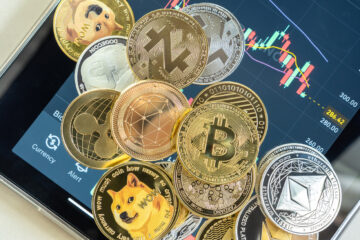There was a surprisingly large amount of tension of what Wednesday’s Consumer Price Index report might show.
And you can expect more tension every time an inflation report comes up, whether it’s this year or 2025.
💰💸 Don’t miss the move: SIGN UP for TheStreet’s FREE Daily newsletter 💰💸
The CPI report showed overall inflation rising 2.6% year over year. Core CPI, which excludes food and energy prices was up 3%.
Related: Stock Market Today: Stocks end mixed on in-line CPI inflation report
That wasn’t a bad report, and short-term interest rates were mostly lower. The 3-month Treasury bill yield was 4.4%, down slightly from Tuesday.
Longer-term rates were a bit higher, however. The important 10-year Treasury yield, however, was up slightly to 4.46%.
The rate on a 30-year mortgage was being quoted at just about 7% on Wednesday, according to Mortgage News Daily, down very slightly from Tuesday but up from 6.11% on Sept. 17.
That was the day before the Fed started to cut rates. Its key federal funds rate has been cut from 5.25% to 5.5% to 4.5% to 4.75%.
High rates are choking housing market
Housing is a weak link in the economy. Rents are high. Construction is down. Home sales have been flat. On a $250,000 mortgage, the monthly principal and interest payment rises 9.7% from $1,517 to $1,663.
Stocks, meanwhile, continued to cool off from all-time highs reached on Monday. The Dow Jones Industrial Average, up as many as 230 points early the day, gave up 183 points to end the day at 43,958, up 47 points.
The S&P 500 was basically unchanged, with the S&P 500 ETF TRUST (SPY) , up 0.5%. The iShares 20+ Year Treasury Bond ETF (TLT) , which tracks longer-term Treasury yields, was off about 1% to $89.80.
The Federal Reserve is thrilled inflation is mostly below 3% and wants to cut short-term inflation rates further than it has so far. What the Fed does not want is a surprise.
A for sale sign is displayed at a home for sale in Los Angeles, Calif. in August.
PATRICK T. FALLON/Getty Images
Is inflation still too high?
Fed officials made their position clear about the CPI report in comments during the day.
Neel Kashkari, president of the Minneapolis Federal Reserve Bank, had told Bloomberg News Tuesday a hot CPI report would make him reconsider another rate cut.
The CPI report on Wednesday was good enough that Kashkari said, “I have confidence that inflation is headed in the right direction.”
Alberto Musalem, president of the Federal Reserve Bank of St. Louis, was more cautious. He’s worried the interest-rate decline that’s come in 2024 will remain stalled.
More Economic Analysis:
Jobs report shocker puts Fed interest-rate cut in playFed inflation report renews pressures, tests interest rate betsFed interest rate decision and election may roil stocks
Data he’s seen suggested the economy is “stronger, perhaps materially stronger than it had been” and that several measures of inflation had come in “a little higher.”
But the tension was rising again as Wednesday turned into Thursday. That’s because the Labor Department’s Producer Price Index report was scheduled to come out before U.S. markets opened in the morning.
Markets look to open flat on Thursday
Futures trading suggested a flat open for the stocks, which have enjoyed a huge rally since the Nov. 5 election. The Standard & Poor’s 500 Index is up 4.8% since Nov. 4.
Trading in Treasury futures suggest there’s still worry that interest rates may be pushed higher.
The rate pressure is partly due to worries about global tensions, particularly in the Middle East. And there’s also concern that President elect Trump’s economic agenda assumes more tax cuts and increased tariffs. That would require the administration to seek to borrow billions of dollars more to finance the government’s operations.
The next big inflation report comes on Nov. 27, the day before Thanksgiving: the Personal Consumption Expenditures Price Index.
The index, the Fed’s preferred inflation gauge, measures what people actually pay for goods and services.
The most recent report on September spending showed prices had risen 2.1% with core inflation (excluding food and energy) up 2.7%.
Related: Veteran fund manager sees world of pain coming for stocks


